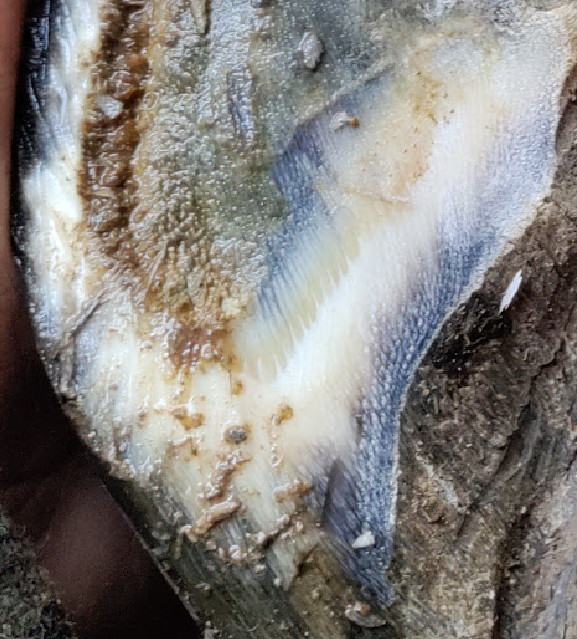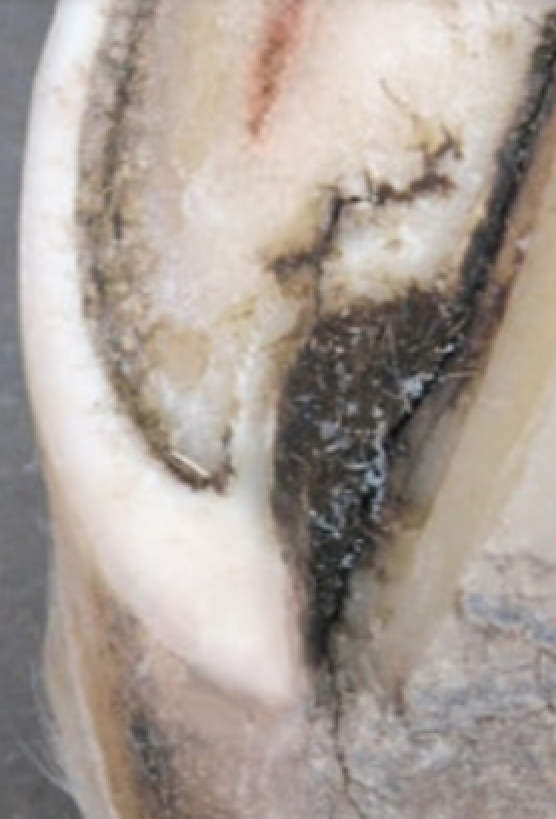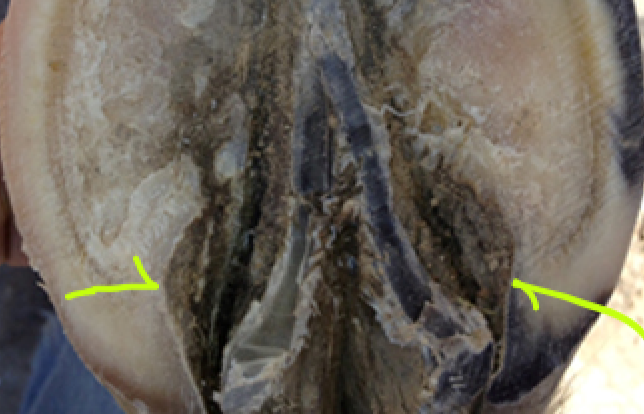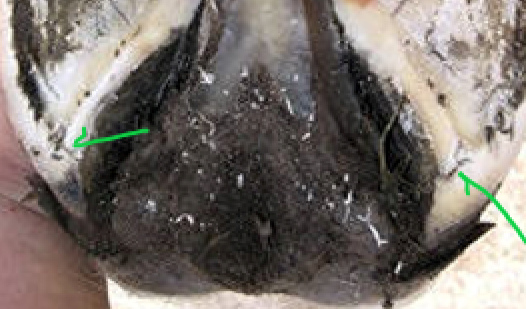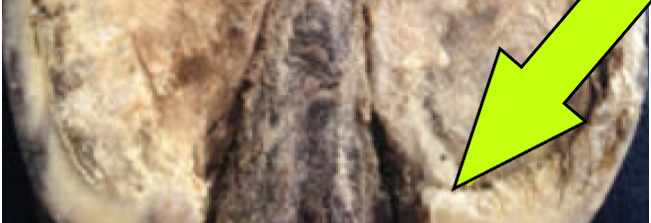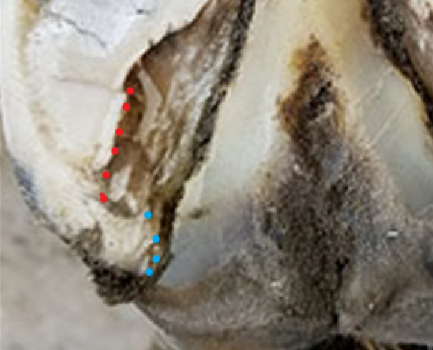Except when they no longer can.
When heel buttresses are laid forward, bars are going to lay down on the sole.
It is possible for a hoof capsule to be so compromised that the wall corium from which the buttress grows no longer produces a full buttress.* The back end of the hoof is made of soft tissues. These soft tissues can and will compress when the capsule is trimmed incorrectly. When this happens, the bar is no longer truly attached to the buttress. I’ve seen more than a few hooves where the bar is butted up against wall, as opposed to there being a robust buttress connecting wall and bar. A true and robust buttress provides support the bar attached to it. One job of a buttress is to support the bar structures in maintaining their optimal angle. Optimal bars grow straight from and with a strong attachment to the buttress. From the buttress they grow straight to their natural termination approximately half way down the frog.
When the bar does not have a true attachment to the buttress, it has nothing to hold it vertical. An unattached bar is totally and completely subject to ground forces. The relative integrity of the hoof in front of/under unattached bars may keep them in place to an extent and for a time. This, though, is dependent on how the rest of the hoof capsule is being maintained.
*Similar to what happens to grass if you lay something it, the grass will not grow.
Another thing that just came to me regarding bars…
I’ve seen many hooves that have the tell tale cracks at the natural terminus of the bar. I’ve seen some too, that don’t have it. It occurred to me yesterday that that cracking very likely corresponds to the flex point in the foot that is determined by the caudal end of the coffin bone. The inner sensitive hoof has the coffin bone for structure in the front half (and half is used loosely here), and the back/caudal half of the foot is made up of tough yet flexible structures. So when a horse lands on it’s heels, and then transfers it’s weight forward during locomotion, there’s a bend point that happens between the front and back parts of the foot.
When the hoof is of optimal size, and the corium that grows the bars is as long as is intended by DNA, the flex point falls at the natural terminus of the bars and cracking is visible. When a hoof is foreshortened and the corium that grows the bars is pushed forward into the capsule and under the coffin bone, the natural terminus of the bars is pushed forward as well. When the natural terminus of bar is forward of this flex point that leaves solid bar over the flex point, and solid bar is much less likely to crack due to it’s very design.




